Apoorva Jain
China aims to modernize its Army – the PLA by 2027 to mark the centenary year of its founding and carves out a clear path to dethrone the US as the strongest military in the world.
The two world powers — the US and China — are currently at loggerhead on several fronts, the most important being the South China Sea and Taiwan.
Beijing claims the self-ruled island as its territory and does not like the US military’s presence in the vicinity, especially the disputed South China Sea. While the situation is still under control, the possibility of a military conflict in the near future cannot be ruled out.
Recently, addressing the nation on the occasion of the Communist Party of China’s (CPC) anniversary celebrations, President Xi Jinping reiterated Beijing’s goal of transforming PLA into a world-class military.
“We must accelerate the modernization of national defense and the armed forces. A strong country must have a strong military, as only then can it guarantee the security of the nation,” he said.
“We will elevate our people’s armed forces to world-class standards so that we are equipped with greater capacity and more reliable means for safeguarding our national sovereignty, security, and development interests,” Xi added.
Over the past few years, many experts and scholars have studied the rise of China’s military and its modernization drive, often comparing it with the US.
Money Vs Muscle Power
A study released in March 2021 by a defense website Military Direct claimed that China defeated the US as the strongest military force in the world.
However, Global Firepower Index 2021 puts China at third place behind the US and Russia in overall military strength, which includes categories ranging from “military might and financials to logistical capability and geography”.
In terms of pure manpower, China has the world’s largest military with more than 2 million active personnel. Meanwhile, the US has close to 1.4 million people in the armed forces with 800,000 reserved personnel.
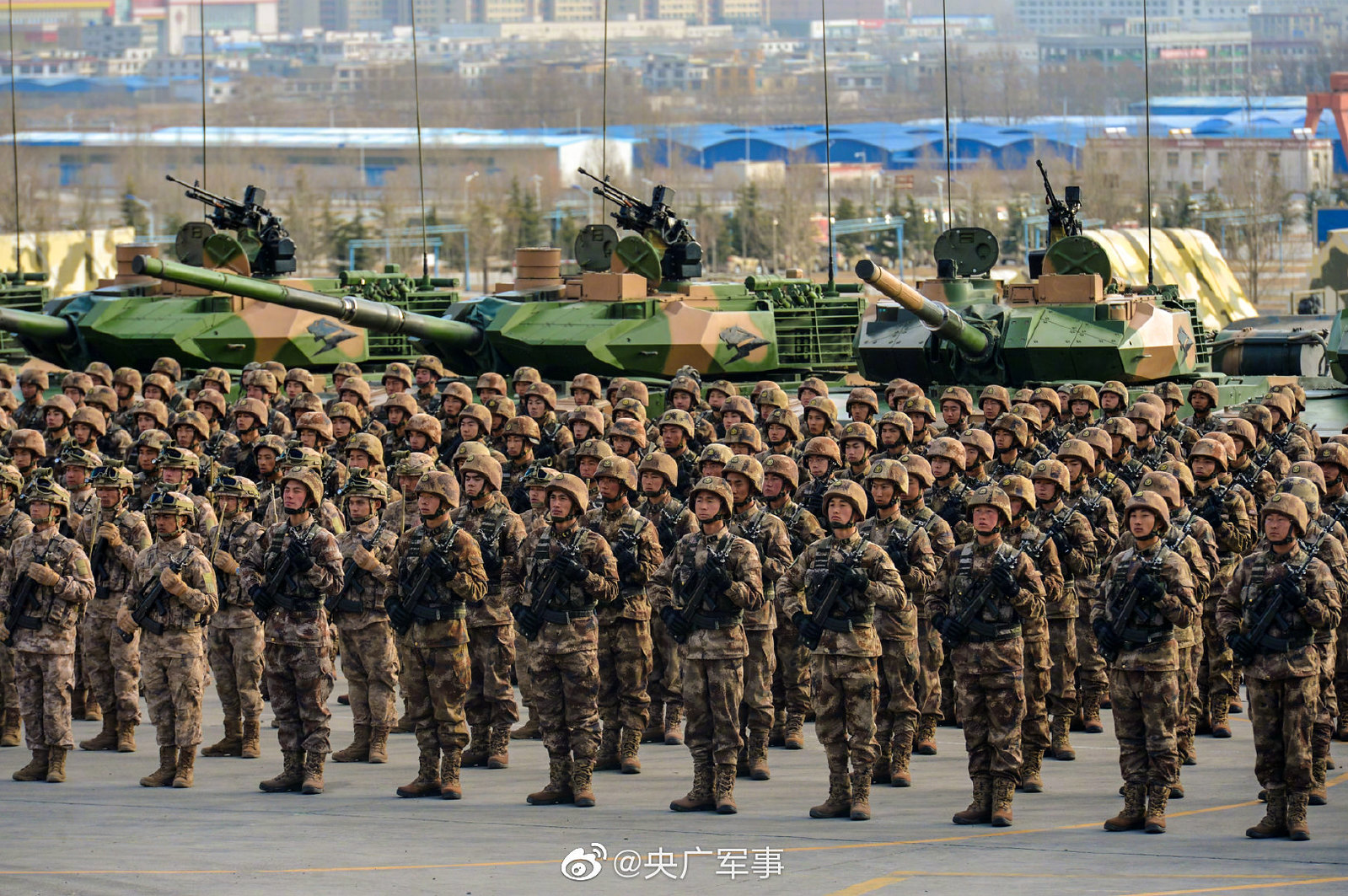 Chinese PLA ground troops. (via Twitter)
Chinese PLA ground troops. (via Twitter)However, the US remains the world’s biggest military spender, estimated at $778 billion in 2020 while China’s defense budget is around $252 billion, just one-third of what the US spends, according to recent data published by Stockholm International Peace Research Institute (SIPRI).
At the same time, China’s spending has risen for 26 consecutive years, the longest series of uninterrupted increases by any country in the SIPRI Military Expenditure Database.
There is one more area where both superpowers are competing with each other — technology. Both technology and weapons are critical factors in modern warfare than manpower.
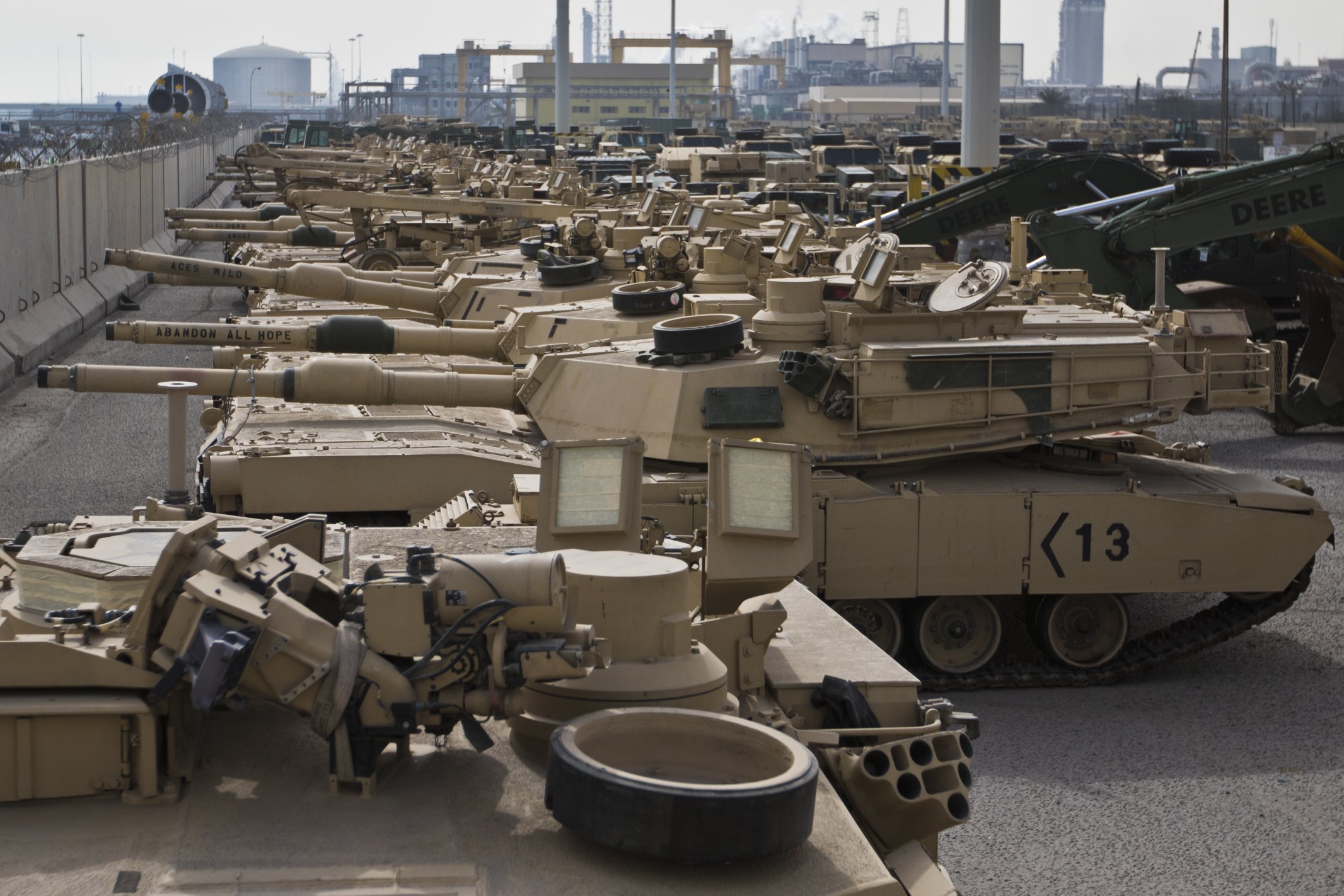 American Tanks
American TanksWhile China had in 2015 announced its plans to reduce the PLA strength by 300,000 troops, the US is also going to downsize its military with a cut of 5,400 personnel, according to South China Morning Post.
China’s PLA Army Vs US Army
China’s PLA is the largest standing ground force in the world, as per the 2020 China Military Power Report released by the US Department of Defense (DoD). With close to 500,000 soldiers on the ground, the US is behind China’s strong one million troops.
China exceeds in numbers of artillery weapons such as rockets, and self-propelled howitzers. But the US has more armored vehicles — 6,333 tanks while China has 5,800, according to Forbes.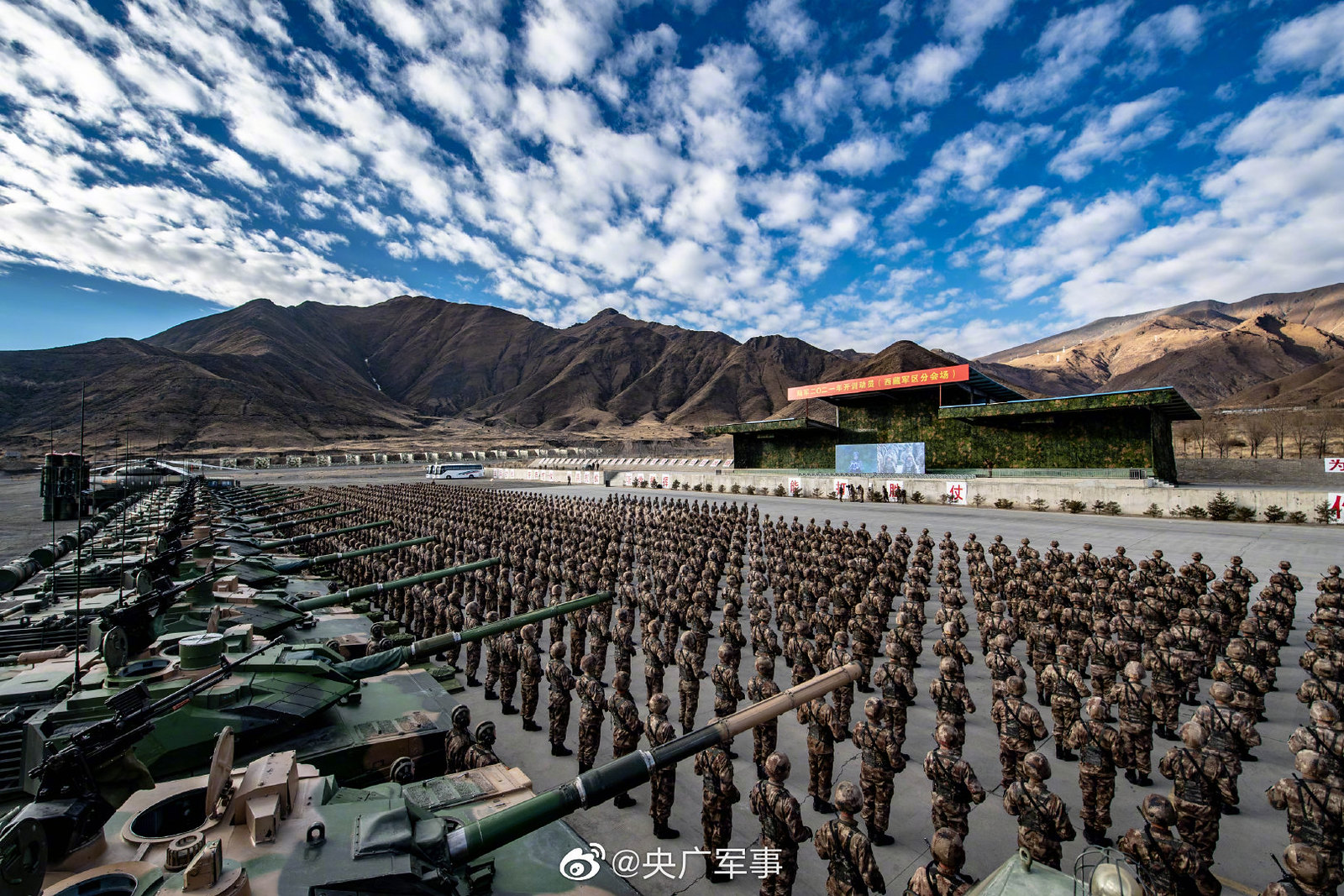 T-15 light tanks at a ceremony held by the Tibet Military Region. (via Twitter)
T-15 light tanks at a ceremony held by the Tibet Military Region. (via Twitter)
 T-15 light tanks at a ceremony held by the Tibet Military Region. (via Twitter)
T-15 light tanks at a ceremony held by the Tibet Military Region. (via Twitter)China’s army modernization comes in the backdrop of the year-long standoff with India in eastern Ladakh. When several media reports highlighted India’s edge over the Chinese army in high-altitude warfare, China began training Tibetan youths to build a force of local militia against India.
The PLA ground forces have procured lighter and automated weapons as seen in the ongoing border conflict with India, a clear signal that it is headed in the right direction as far as military modernization is concerned.
The EurAsian Times recently published a report on how both countries continue to deploy more soldiers at the frontiers along with advanced weapon systems like the S-400 missiles, Rafale & J-20 jets.
PLAAF Vs US Air Force
The US dominates China in having the world’s largest air force (three times that of China) with close to 13,000 aircraft, helicopters accounting for more than 43% of the force.
 The J-20 ‘Mighty Dragon’. (via Twitter)
The J-20 ‘Mighty Dragon’. (via Twitter)The PLA Air Force (PLAAF) and PLAN Aviation together constitute the largest aviation forces in the region and the third-largest in the world with over 2,500 total aircraft and approximately 2,000 combat aircraft, as per 2020 China Military Power Report.
It also states that PRC has more than 1,250 ground-launched ballistic missiles (GLBMs) and ground-launched cruise missiles (GLCMs) with ranges between 500 and 5,500 kilometers as compared to the United States which fields one type of conventional GLBM with a range of 70 to 300 kilometers and no GLCMs.
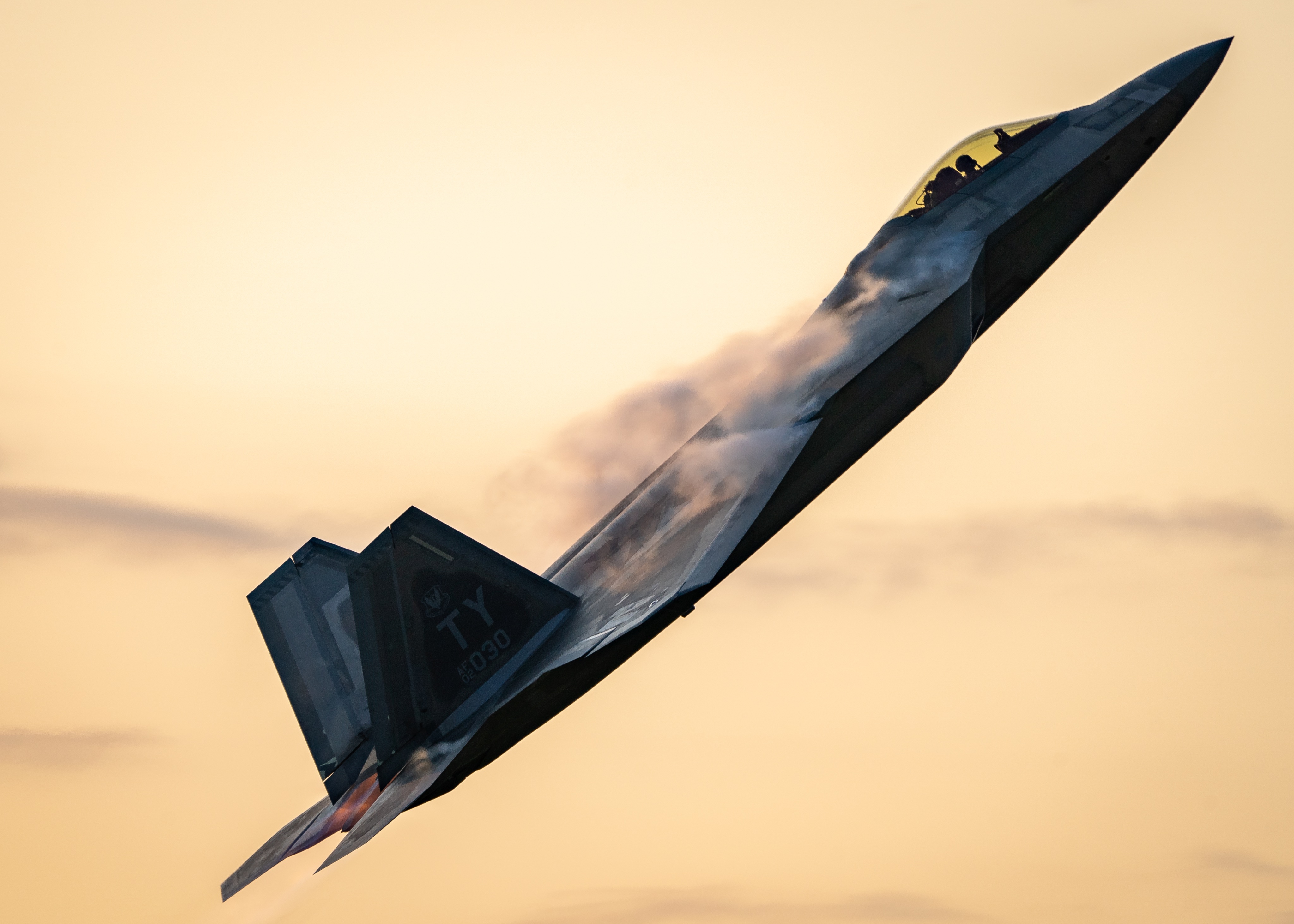 US F-22 Raptor
US F-22 RaptorIn the case of fighter jets, both US and China have their indigenously built fifth-generation jets, F-35 and F-22, and the J-20 and FC-31 (yet to be operational). While China dominates in the fighter aircraft category, the US has more multi-role aircraft.
Experts suggest that if China continues to innovate and modernize its air force, it will soon usurp Russia for the second spot, closely following the US.
China’s PLAN Vs US Navy
The Chinese PLA Navy has seen rapid modernization since the start of the 21st century. The Pentagon in its report acknowledges that China has the largest navy in the world, surpassing that of the US.
“The PRC has the largest navy in the world, with an overall battle force of approximately 350 ships and submarines including over 130 major surface combatants.
In comparison, the US Navy’s battle force is approximately 293 ships as of early 2020,” the report said.
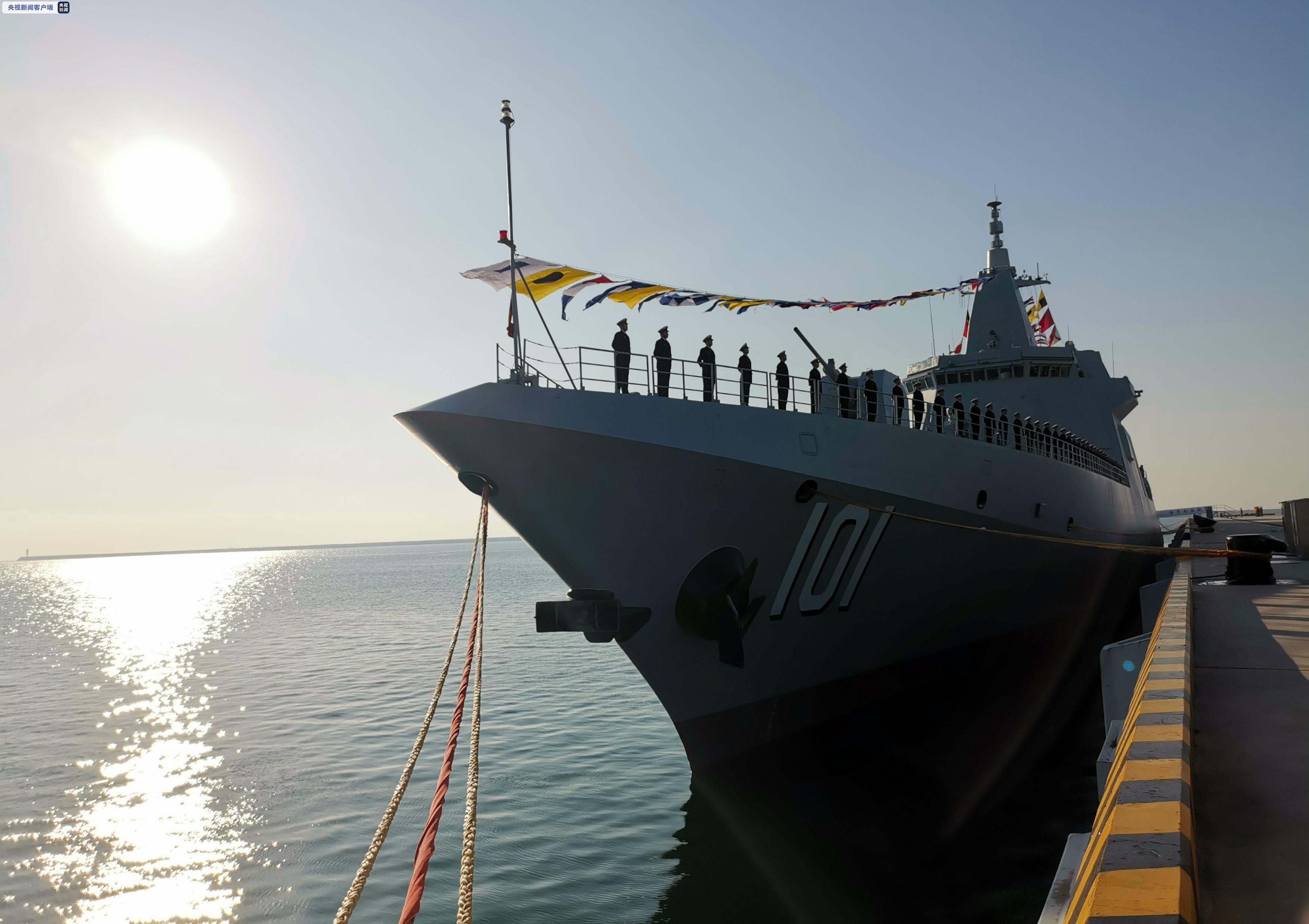 China’s first Type 055 guided-missile destroyer Nanchang. (Image: People’s Daily)
China’s first Type 055 guided-missile destroyer Nanchang. (Image: People’s Daily)China’s focus on naval power stems from the global shift in nature of power projection from continental to maritime.
The South China Sea has become the fulcrum of China’s influence and muscle-flexing especially after the 2016 Permanent Court of Arbitration judgment which ruled against China’s expansionist tendencies.
Among the border disputes, most of the remaining ones are maritime boundary issues with littoral South East Asian states. Another significant reason for rapid naval modernization is the entry of the US into China’s neighborhood through its dynamic Indo-Pacific Policy.
The shift from the Middle East to the Indo-Pacific as the world’s most militarized zone has irked China, and with arch-rival India joining in too, Beijing is expectedly furious.
Along with the US, European powers like Germany, France, Netherlands have already come with an independent Indo-Pacific strategy while the European Union is in the process of building one.
 The nuclear-powered aircraft carrier USS George Washington. (via Twitter)
The nuclear-powered aircraft carrier USS George Washington. (via Twitter)With these geopolitical changes, by 2025, the PLAN is predicted to field as many as 400 vessels whereas the United States plans only to field 355.
Nuclear Arsenal
The SIPRI Yearbook 2021 on the current state of armaments, disarmament, and international security highlights the trends in the number of nuclear warheads of the US, China, and other countries possess.
While the US has been reducing the total number of warheads as it dismantles the retired ones, the country still possesses 5,550 total nuclear warheads. Around 1,800 are actively deployed, which means they are immediately available for wartime use.
 China’s DF-41 nuclear missiles.
China’s DF-41 nuclear missiles.China has a smaller stockpile of nuclear warheads as compared to the US — 350. SIPRI notes that “China is in the middle of a significant modernization and expansion of its nuclear weapon inventory”.
The Pentagon assessed that China had about 100 nuclear-armed intercontinental ballistic missiles (ICBMs) but was expected to double that number in the coming years.
In June, Foreign Policy magazine in a report identified a large number of structures that were identical to those housing missile silos in China’s Gansu province.
The report counted 120 such silos or missile launch facilities, speculating that they could be for China’s newest nuclear-armed missile, the DF-41. Meanwhile, the US has around 400 such ICBMs, mainly the land-based Minuteman III missile.
Hypersonic Technology
China became the first country to develop a first-of-its-kind hypersonic glide vehicle (HGV), which made its public appearance at a military parade in Beijing in 2019. The rocket-boosted hypersonic glide vehicle (HGV) is called, Dongfeng-17,
While the US is among the four countries that have High-Speed Technology Demonstrator Vehicle (HSTDV), reports suggest that American efforts still lag behind China and Russia with a US missile unlikely to be fielded until 2023.
The EurAsian Times earlier reported that China is building a wind tunnel capable of simulating flights at Mach 30 (23,000 mph) or 30 times the speed of sound. Called JF-22, it uses chemical explosions to create hypersonic conditions in the tunnel.
On the other hand, LENS II, considered the most advanced hypersonic wind tunnel in the US, has simulated flights up to Mach 7, with the simulation lasting 30 milliseconds.
The US is pushing hard to catch up with China in the race to harness the power of hypersonic technology, which could dictate future warfare.
The Pentagon has requested $3.8 billion in the fiscal year 2022 budget for hypersonic research funding, signaling that a new arms race is already underway.
The Taiwan Question
Experts view Taiwan as the 21st-century flashpoint between a rising China and the rest of the world. The democratically governed island-nation is claimed by mainland communist China after nationalist forces fled to the island in the aftermath of losing to Mao Zedong’s forces in the Chinese civil war.
The sentiments were reflected during Chinese President Xi Jinping’s speech when he highlighted that “resolving the Taiwan question and realizing China’s complete reunification is a historic mission and an unshakable commitment of the Communist Party of China ”.
Xi also warned of “resolute action to utterly defeat any attempt toward Taiwan independence”, indirectly referring to the support extended to Taiwan by US-led allies.
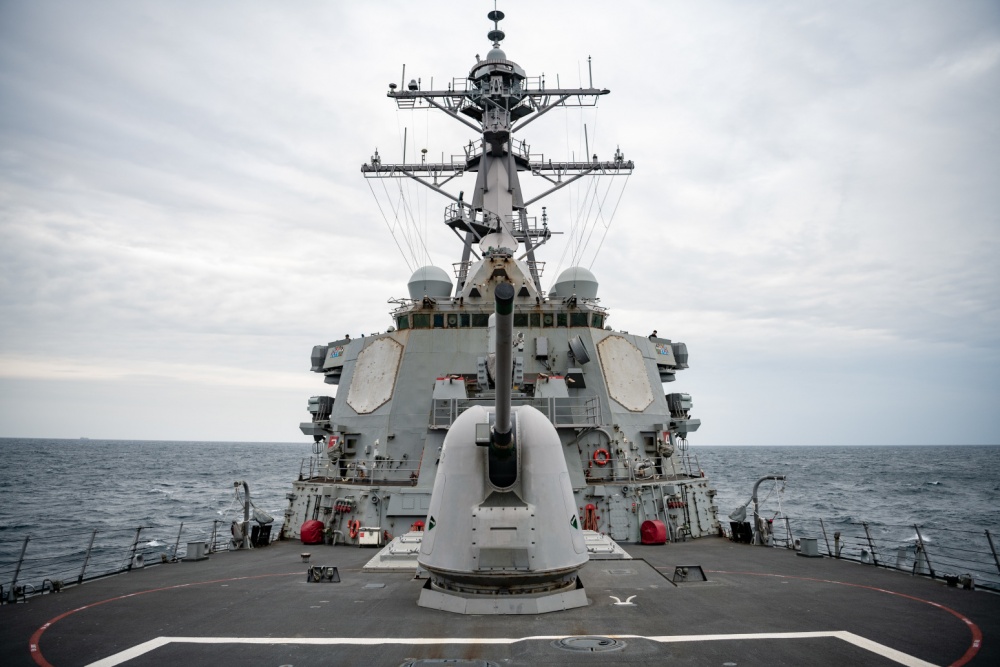 A US missile destroyer transits the Taiwan Strait. (Image: US Indo-Pacific Command)
A US missile destroyer transits the Taiwan Strait. (Image: US Indo-Pacific Command)China continues to intimidate the island-nation using a combination of all three military forces and employing hybrid warfare techniques.
The Congressional Research Service released a paper on ‘China Naval Modernization: Implications for U.S. Navy Capabilities’, which stated that China wants its navy to be capable of acting as part of a Chinese anti-access/area-denial (A2/AD) force—a force that can deter US intervention in a conflict in China’s near-seas region, possibly Taiwan.
The EurAsian Times earlier reported how Chinese dredgers gather in hundreds around the waters of Matsu islands, the closest part of Taiwan to the mainland, as the residents fear the Chinese Navy would be next.
Most of the recent incursions have been through air, as Chinese fighters and other aircraft invaded Taiwan’s Air Defence Identification Zone (ADIZ), the largest one on June 15 when 28 Chinese military aircraft, including J-16 fighter jets, entered the island’s airspace.
All eyes are now set on the 20th plenary meeting of the CPC to be held in 2022 when major military-related announcements are expected as China continues to move ahead on its modernization path.
No comments:
Post a Comment